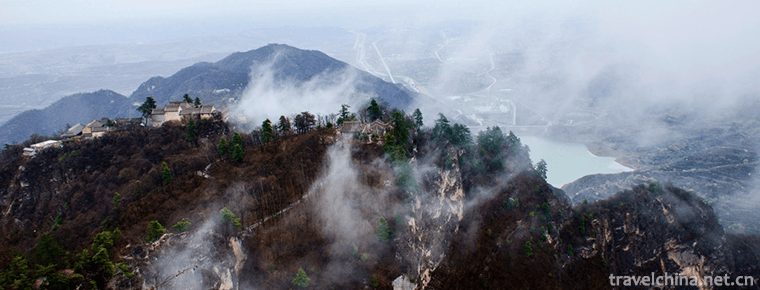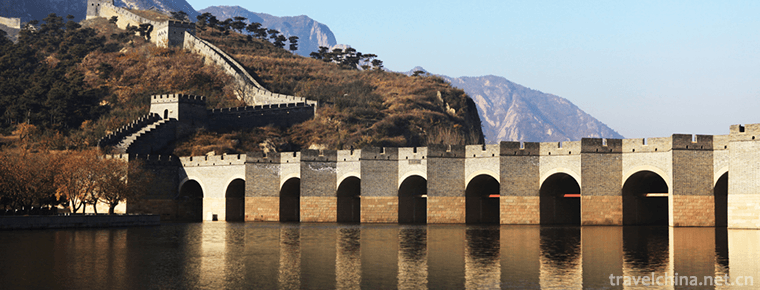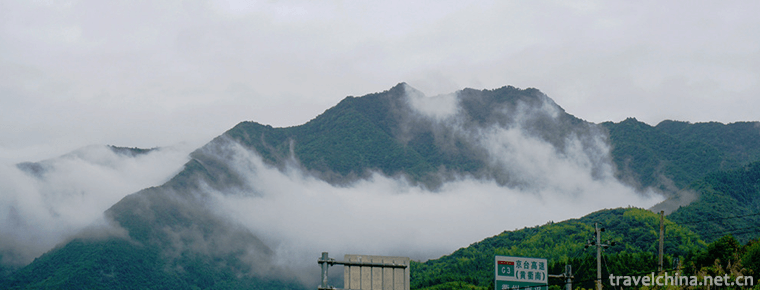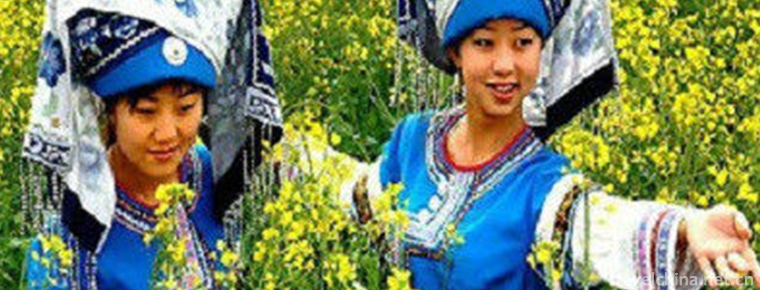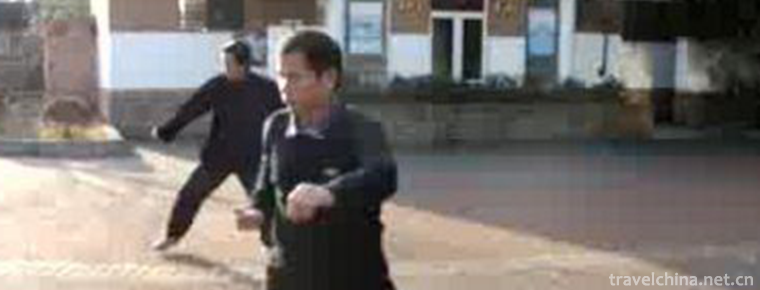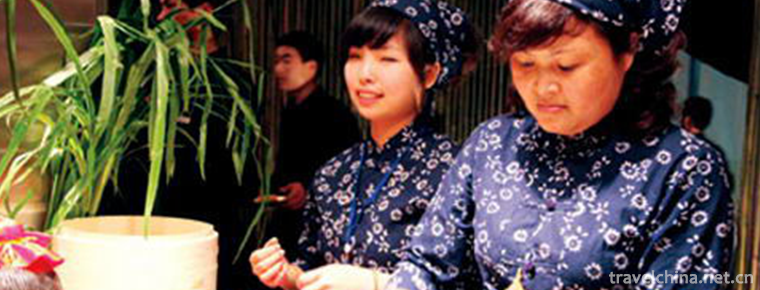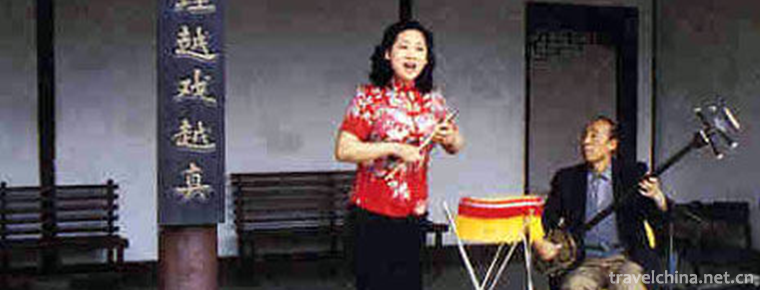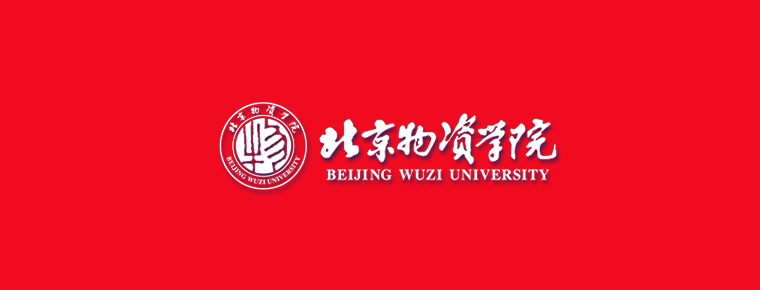Taiyuan Qingxu Baoyuan Old Vinegar Workshop
Taiyuan Qingxu Baoyuan Old Vinegar Workshop
Taiyuan Qingxu Baoyuan Old Vinegar Workshop is located in Taiyuan City, Shanxi Province. It is the "Taiyuan Youth Heritage and Education Base". It has been awarded the "First Industrial Tourism Demonstration Scenic Spots of Taiyuan City" by Taiyuan Tourism Bureau, the "Museum of Vinegar Brewing Techniques of Qingxu Old Vinegar of Shanxi Province" by Shanxi Culture Department, and the "National AAAA Grade Tourist Scenic Spot" by the National Tourism Bureau
"Since ancient times, vinegar has been brewed in Shanxi Province, while vinegar in Shanxi Province has been brewed slowly." As the birthplace of Shanxi old vinegar, Qingxu has made great contributions to the vinegar industry in China during the evolution of vinegar history over 4000 years. Qingxu is also known as the "vinegar capital of China".
Historical evolution
In the Ming and Qing Dynasties, the development of Shanxi old vinegar reached its peak. A large number of vinegar-making workshops such as Baoyuan Fang, Shuntai, Tongtaiqing and Meihe Ju emerged successively in Qingxu. With Shanxi businessmen going south and north, Shanxi old vinegar spread all over the Yangtze River and became the favorite condiment and was praised as "the first vinegar in the world".
Baoyuan Fang was founded in Xuande, Ming Dynasty, in 1428. It has a history of more than 500 years. Baoyuan old vinegar, as a royal tribute of Ming and Qing dynasties, wrote a brilliant chapter for Shanxi vinegar industry. However, with the advance of history, during the period of the Republic of China, Baoyuan Old Vinegar Factory closed because of the devastation of famine and war in Jinzhong area for many years.
In order to excavate the profound historical and cultural connotation of old vinegar, promote Shanxi vinegar culture, and let the world know the historical origin and traditional production process of old vinegar, the original appearance of vinegar workshop in Ming and Qing Dynasties was completely restored on Baoyuan square site.
The rebuilt Baoyuan Old Vinegar Workshop adopts the architectural style of Ming and Qing Dynasty, with carvings of green bricks, grey tiles and ancient wood. It completely restores the production process of old vinegar in Ming and Qing Vinegar Workshop. Vinegar making utensils, tools and clothing are used to reproduce the scene of ancient vinegar making step by step from raw materials to finished products.
Scenic spot culture
Technology
Qingxu Old Vinegar is produced in Qingxu County. It is made of high-quality red sorghum grown in Qingxu and Jinzhong areas, barley, pea and various skin chaff as auxiliary materials, red heart Daqu as starter, reasonable ingredients, steaming materials, anaerobic alcoholization, solid acetic acid fermentation, high-temperature fumigation, high-low cylinder leaching and high-standard aging. Qingxu old vinegar has a bright color and hangs on the wall in a bowl. It combines the fragrance of brewing, spices, mellow fragrance and ester fragrance. It enjoys the nickname of "bottle fragrance" among the people.
Shanxi Shuita vinegar brewing technology as a typical representative of this technology, in order to ensure the inheritance and development of Qingxu vinegar brewing technology, the first batch was declared and selected into the national intangible cultural heritage list in 2006.
Shanxi Shuita Laocheng Vinegar Co., Ltd. is the first batch of key leading enterprises of national agricultural industrialization determined by the eight ministries and commissions, and is also a large-scale production base of Shanxi Laocheng Vinegar at present.
By the end of 2008, Shuita Company had signed orders with more than 25,000 farmers, built a high-quality red sorghum planting base of 30,000 mu, arranged more than 1,200 rural surplus labor force, solved the employment of more than 200 college and secondary school students and laid-off workers, and made outstanding contributions to the local economic and social development.
History
There is a folk song that says, "Since ancient times, vinegar has been brewed in Shanxi, tracing back to Qingxu". Qingxu vinegar has a long history. According to legend, Qingxu vinegar began in the period of Emperor Yao, and it has been more than 4000 years since then. According to historical records, Emperor Yao settled down in the capital of Xu Yao in Qing Dynasty during his migration, and later moved to Hedong Pingyang because of the flood. Therefore, Yaocheng is known as "the first capital of China". At that time, there was a kind of acidic plant called "pod" growing in Yaocheng area. Emperor Yao ordered astronomers to make calendar according to the growth law of pod and climate change. At the same time, he used this oxalic acid to make condiments, which was the original vinegar. "Pods" recorded in the ancient books "Jinian of Bamboo Books" and "Baihutong, Furui" in the Eastern Han Dynasty Yingzhao's "General Meaning of Customs" are textually studied: "Pods were born in the ancient peace, and their taste was sour. They were flavored, and then replaced by hong." This kind of plant vinegar made directly from acid has pioneered the production of vinegar.
Qingxu aged vinegar is made of local red sorghum as the main raw material, various furs as the auxiliary material, Hongxin Daqu as the starter and koji substitutes, through rational ingredients and steaming materials, using dilute mash anaerobic alcoholization, solid acetic acid manual turning, artificial fermentation at variable temperature on demand, high temperature fumigation, high density leaching, high standard aging. This technique with obvious local characteristics has been handed down from generation to generation in Qing and Xu dynasties. Through continuous improvement and improvement, a set of advanced vinegar brewing process with northern style has been formed.
Qingxu County, the capital of Chinese vinegar, is the authentic birthplace of Shanxi old vinegar. The old vinegar produced by Qingxu County is the first of China's four famous vinegars, known as "the first vinegar in the world".
For thousands of years, Qingxu vinegar industry has made outstanding contributions in innovating brewing technology (vinegar drenching, vinegar fumigation, aging), improving dietary flavoring, providing medical treatment, enhancing human health and developing dietary culture.
region
"Since ancient times, vinegar has been brewed in Shanxi Province, while vinegar in Shanxi Province has been brewed slowly." As the birthplace of Shanxi old vinegar, Qingxu has made great contributions to the vinegar industry in China during the evolution of vinegar history over 4000 years. Qingxu is also known as the "vinegar capital of China".
Baoyuan Old Vinegar Workshop has been designated as "Taiyuan Youth Heritage Education Base" by Taiyuan Education Bureau, as "the first batch of industrial tourism demonstration scenic spots in Taiyuan City", "Excellent Tourist Scenic Spots (spots) in 2011", and as "Shanxi Qingxu Old Vinegar Brewing Museum" by Shanxi Provincial Department of Culture. These honors will surely be the development of Shanxi Old Vinegar. Everbright has played a huge role in promoting.
Effect
Vinegar is a traditional Chinese condiment with a long history. Vinegar culture has also become the traditional culture of the Chinese nation. Throughout the origin and evolution of vinegar, the brilliance of Chinese cultural wisdom is reflected in every step from the vinegar of Spring and Autumn Period and Warring States Period, the Oxalis of Han Dynasty, the bitter wine of Jin and Northern and Southern Dynasties, the vinegar of Tang Dynasty to the modern fine vinegar, health vinegar and vinegar beverage. As early as in Wu Zimu's Dream Lianglu in the Southern Song Dynasty, there was the saying that "people are indispensable everyday, firewood, rice, oil, salt, sauce, vinegar, wine and tea", which was originally called "eight things". By the Yuan Dynasty, the "wine" was omitted and became the "seven things". In the lyrics of Yuhuchun, Baichating and Duliucui in Yuan Dynasty, we can see the phrase "seven things open in the morning, firewood, rice, oil, salt, soy, vinegar and tea".
Shanxi old vinegar is the first of China's four famous vinegar, known as "national vinegar" and "the first vinegar in the world". It is mainly made of grain as raw material and bacteria fermentation, followed by saccharification, alcoholic fermentation and acetic acid fermentation, disinfection and sterilization. Brown-red color, uniform body, harmonious fragrance, edible and acid, mellow and soft, moderate acidity and sweetness, long aftertaste, unique "acid, cotton, sweet, fragrant, fresh" flavor characteristics, rich nutrition, condiments, nutrients include: protein, 18 kinds of amino acids, carbohydrates such as glucose, maltose, organic acids, vitamins, calcium, iron, zinc and other minerals 42 trace elements. Vegetables and aroma components.
Li Shizhen said in the book Compendium of Materia Medica that vinegar can "relieve swelling and pain, disperse water and gas, kill pathogens and poisons". In medical books of past dynasties, vinegar has been widely used to treat angina pectoris, constipation, urinary blood, sores and other diseases. Modern medicine holds that vinegar has strong bactericidal, antiviral and antioxidant effects; it can improve gastrointestinal function, increase appetite, and promote the dissolution of calcium, phosphorus, iron and other elements in food, so as to facilitate human absorption; it can improve human metabolism, prevent and alleviate fatigue; it is a good product with a variety of cosmetic effects. Traditional medicine and modern clinical practice have proved that vinegar also has unique pharmacological effects: processing traditional Chinese medicine to enhance the efficacy of drugs, reduce toxicity and side effects, sober up and detoxify, prevent colds, cholesterol, reduce blood pressure, prevent arteriosclerosis, reduce blood lipids, prevent and treat liver diseases, treat diabetes, anti-cancer health care, stomach and diarrhea, restore physical strength, delay aging, prevent diseases and maintain health, commonly used health.
geographical environment
geographical position
Taiyuan Qingxu Baoyuan Old Vinegar Square is located in the central part of Shanxi Province. It has 37 degrees 36'14 north latitude and 112 degrees 20'44 East longitude. The northwest part of Jinzhong Basin is the South Gate of Taiyuan, the provincial capital. Two national highways 208 and 307, Qingyin Expressway and Taizhong-Yinchuan Railway pass through, with convenient transportation, fertile land, dense water system and numerous lakes.
Climatic characteristics
Qingxu County is a warm temperate continental climate with distinct seasons, with an average annual sunshine of 2577.5 hours and a sunshine rate of 58%; a frost-free period of 183 days; the annual average temperature varies with the topography, with the average temperature in Pingchuan being 9.6-10.2 degrees, in Bianshan being 10.4-10.6 degrees, and in mountainous areas being 3.8-9.1 degrees; the annual average precipitation is 462 mm.
Main attractions
Frescoes of Four Seasons Farming
These four large-scale murals depict different farming conditions in northern China during the four seasons of the year, including spring farming, summer cultivation, autumn harvest and winter harvest. First of all, we can see the spring ploughing map. A year's plan lies in spring. Spring is the season for all things to sow. This dynamic picture shows a peaceful spring ploughing map. Sorghum is planted at this time, and when it is ripe, we can brew our sour, fragrant and sweet Shanxi vinegar. Summer is a flourishing season for crop growth. Watering, insecticide, fertilization and so on are necessary when the crops grow. So this time of year is the hardest season in a year. Seeing this dynamic labor scene, we can surely think of the poem "Hoeing Grass Day: afternoon, sweat drops and soil, who knows that lunch is hard on the plate".
A plough has a harvest. Autumn is the harvest season. Look, people are harvesting their own sorghum in full swing. Under this pile is the mature sorghum. The sorghum used in vinegar production must be the sorghum produced in Jinzhong area. It has thin skin, big grains, bright red color, and the quality and quantity of sugar are obviously higher than other crops. "People say mountain." Shanxi vinegar is delicious because it is made from the essence of Shanxi cereals and grains. It comes from pure nature and shows all kinds of cereals and grains used in daily life.
Agricultural Culture Murals
This mural records typical examples of farming culture in different periods. It is a three-dimensional farming epic. In the same picture, Shennong pottery and Cangjie characters are interspersed. All these reflect that with the development of farming civilization, human society has gradually entered the civilized era from the barren era, but farming still takes land as mother and land as wealth, which is also cited. There was a constant war between tribes for land.
Jinzhong is the birthplace of Chinese farming culture, where the geographical environment is superior, the climate is appropriate, the soil is fertile, the river and lake network. Qingxu is located in the northwest part of Jinzhong Basin. It is rich in sorghum and other main raw materials for vinegar brewing. Besides, there are abundant varieties of small miscellaneous grains, which are also known as the miscellaneous grains kingdom. Therefore, these unique natural advantages make the old vinegar produced by Qingxu taste the best. Qing Xu, known as Geyang in ancient times, was built in the Spring and Autumn Period. It is very conducive to production. Therefore, in this magical land, it has written a glorious history of farming culture in northern China.
Longshan Culture Murals
Longshan culture has a history of 4500 years. At the beginning of this century, archaeological excavations were carried out in Dugou Township of Xumayu Township in Qing Dynasty. A large number of relics of late Longshan culture were unearthed, which fully proves the long farming history of Qingxu. In fact, the picture also cleverly interspersed with various mythological stories, such as the well-known "Dayu water control", "Houyi shooting day", "Nuwa mending the sky", and so on. These mythological stories actually reflect the hardships and persistence of ancestors in the process of agricultural production to overcome natural disasters, and it is a 5000-year history of civilization, but also a 5000-year history of Agriculture and agriculture fighting against nature. Houyi Shooting Day, a legendary portrayal of the ancestors'drought resistance and peasant protection, and Dayu's water control, is the historical fact that the ancestors conquered floods and wilderness and opened up fields.
Travel Tips
Tourist route
1. Taiyuan takes bus 905 to Yingxian Coking Group Station, and then takes a taxi to the scenic spot.
2. Or take part in local short-term tour groups, they will go to Baoyuan Old Vinegar Shop, Pingyao Ancient City, Qiaojia Grand Courtyard and other places.
3. Vinegar Square is only 20 minutes'drive from Qiao's courtyard, and can be directly taxi from Qiao's courtyard.



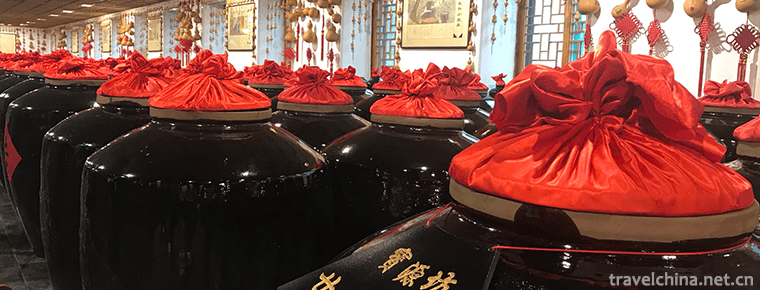
-
Kongtong Mountain Scenic Spot
Kongtongshan Scenic Area is located 12 kilometers west of Pingliang City, Gansu Province. It overlooks Xi'an in the east, Lanzhou in the west, Baoji in the South and Yinchuan in the north.
Views: 209 Time 2018-12-12 -
Jianglangshan 28du Tourist Area
28du Town, located in Jiangshan, Zhejiang Province, is a famous historical and cultural town. It is a writer's creation base in Zhejiang Province. It is located at the junction of Zhejiang,.
Views: 192 Time 2019-01-21 -
Bouyei Pange
Bouyei Pange is a traditional folk song of the Bouyei nationality. It is a folk literary work created and sung in the original Bouyei language. Bouyei Pange is popular in Buyi villages.
Views: 117 Time 2019-04-04 -
Block door La shou men
Stopper Gate is one of the traditional Chinese boxing schools. It originated in Shaolin and was introduced to Tianjin in the early Qing Dynasty. It originated in Sichuan. It was the earliest southern .
Views: 214 Time 2019-05-10 -
Manufacturing Techniques of Fukushima Ship with Watertight Cabin
The manufacturing technology of watertight compartment Fukushima, the local traditional handicraft technology of Jiaocheng District in Jinjiang and Ningde City, Fujian Province, is one of the national.
Views: 147 Time 2019-06-15 -
Production Techniques of Wufangzhai Zongzi
The traditional production techniques of Wufangzhai zongzi are mainly divided into 36 processes, such as material selection, rice dipping, leaf boiling, stuffing, shelling, wrapping, thread binding an.
Views: 214 Time 2019-06-29 -
Xiangyuan Drum Book
Xiangyuan Drum Book is a traditional opera in Shanxi Province. Originated in Xiangyuan, Shanxi Province, it is popular in Shangdang area. It is also called Guer Ci and Xiangyuan Tune. According to leg.
Views: 251 Time 2019-07-06 -
Beijing Wuzi University
Beijing Wuzi University is a public institution of higher learning which is characterized by logistics and circulation, based on economic disciplines, with management disciplines as its main branches,.
Views: 313 Time 2019-09-06 -
Introduction to Panzhihua
Panzhihua, a prefecture level city of Sichuan Province, is located in the southernmost end of Sichuan Province, 614 km away from Chengdu in the north, 273 km from Kunming in the South and Lijiang and Dali in the West; it is located in the central and southern section of Panxi Rift .
Views: 331 Time 2020-12-14 -
Environmental protection in Mianyang
In 2018, the water quality of Fujiang, Kaijiang, Zijiang, Anchang River, Furong River, Tongkou River and Luban reservoir in Mianyang City accounted for 100% of the total water quality. Among them, Fujiang River, Tongkou River, Zijiang River and Anchang.
Views: 343 Time 2020-12-14 -
Population and nationality of Suining
At the end of 2019, the total number of household registration in Suining was 1 million 380 thousand, and the household registration population was 3 million 629 thousand, a decrease of 0.7% over the previous year, of which 1 million 4 thousand and 900.
Views: 126 Time 2020-12-16
